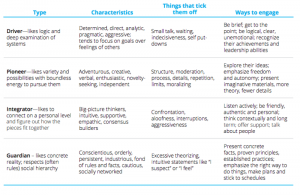
As the economy continues to grow, unemployment is shrinking and the available talent pool is becoming more competitive. The result? Passive job seekers (i.e. someone who has a job, but would be open to new opportunities) are in high demand in the recruiting world. Passive candidates are generally perceived to be a higher quality hire, because they often possess job specific skills and proven industry experience that could be a major asset for your team.
However, without the corporate budget to hire an expensive headhunter, how can you target passive job candidates and build a high quality talent pipeline for your business?
The answer is simple : social media. (Specifically, LinkedIn.)
LinkedIn is the premier market for seeking passive job candidates. With over 364 Million registered members globally, and 115 Million users just in the United States, there are millions of passive job seekers ready and waiting for opportunity to come knocking.
But in such a competitive space, it can be hard to fight through the noise and create meaningful conversation with potential candidates. Hiring managers need to take a strategic approach to finding top talent, and then personally reach out to present a compelling opportunity.
If you’re ready to dive in, here are a few helpful tips for using the LinkedIn database to your best advantage…
Build Your Own Network
The first step to getting started on LinkedIn is to take ownership of your professional presence and build a strong network of connections. Always keep in mind that utilizing LinkedIn works best when it mirrors the traditional networking processes.
For example, you wouldn’t show up to a networking event in a disheveled outfit, so you can’t reach out to connections on LinkedIn until you’ve built your professional brand. How do you build a strong professional brand? First, establish your credibility by fully filling out your LinkedIn profile, adding a professional headshot, and garnering endorsements from friends and colleagues. Then, connect, connect, connect! Build your network from the ground up and prove that you’re someone worth knowing in this social space.
Once you’ve established yourself on the site, it’s time to start checking out potential jobseekers.
Read Between the LinkedIn Lines
Knowing which candidates are ready to make a professional change is half the battle — and reading the LinkedIn “tea leaves” isn’t as daunting as you might think. If you are looking for passive candidates who are ready to jump, a popular trick is to search for recently updated profiles.
For example, connections in your network with modified headlines that focus less on their job title and more on general industry experience may be consciously distancing themselves from their current company role. Other helpful signs to look for include an updated experience section (especially if they start listing updated details about their current work assignments) or a flurry of general LinkedIn activity, including new industry connections, status updates that reference networking events, or increased activity on specific LinkedIn groups.
Finally, when you are trying to identify the best possible passive candidates, pay special attention to heavily endorsed skills and personal recommendations. It’s easy for professionals to boast about their own skills and abilities, but enthusiastic praise from an objective third-party demonstrates a whole new level of strength that you just can’t fake.
Leverage Your Alumni Network and Other LinkedIn Groups
If you’re a recruiter who needs to fill several entry-level positions, start seeking out recent college grads who can breathe fresh life into your organization.
Whether you’re looking to leverage the young alumni at your beloved alma mater, or you happen to be located in a college town and want to recruit local students with fresh talent, LinkedIn has you covered. In 2013, the social media site rolled out robust university pages, which provide detailed information about members associated with specific university networks. But these pages aren’t just for inquisitive students — professionals can also leverage this information to find quality talent.
To explore these networks, login to your LinkedIn account, navigate to the “Connections” tab, and click “Find Alumni.” You will automatically be redirected to your alma mater’s university page, where you can utilize advanced filters to search for your perfect candidate. To find connections in another university network, simply click “Change University” in the upper left hand corner and search for the school of your choice.
Remember to Keep a Personal Touch
Always remember that LinkedIn is about one-on-one connection, so keep a personal touch in your communication. If you would like to broadcast current job openings via personal status updates, remember that YOU are the one reaching out to your network, so the message should feel conversational.
If you have a candidate in mind, reach out for one-on-one conversations via LinkedIn’s message inbox. Pitch the job opening, and see if you can create a meaningful exchange about how this opportunity could mutually benefit the candidate and your organization.
With these four tips, you will be well on your way to leveraging LinkedIn to find top quality talent! And for more information on how to find the best candidates, check out Hyrell’s Online Recruiting Guide.
(243)









